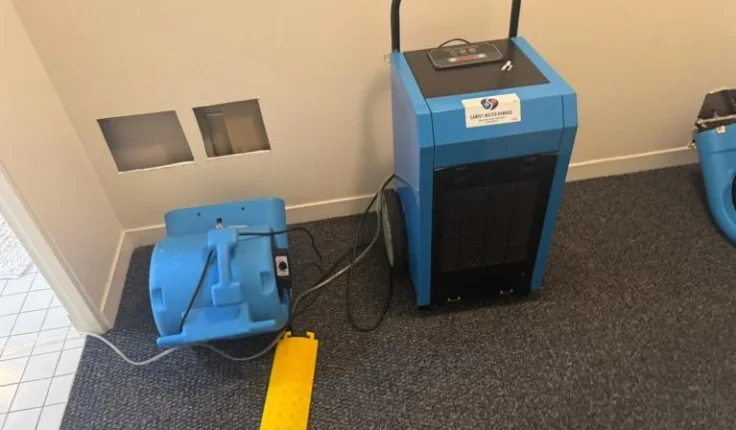Structural Drying Brisbane & Gold Coast – Restoring Your Property After Water Damage
0 Views

When water damage strikes your home or business, time is your biggest enemy. Moisture trapped inside building materials can lead to structural weakening, mould growth, and expensive long-term repairs. This is where Structural Drying Brisbane and Structural Drying Gold Coast services play a critical role in safeguarding your property and your health.
Whether caused by storms, flooding, burst pipes, or plumbing leaks, water intrusion requires a fast, professional response. Let’s explore what structural drying involves, why it’s essential, and how local specialists in Brisbane and the Gold Coast can help you restore your property efficiently.
What Is Structural Drying?
Structural drying is a specialised water damage restoration process designed to remove excess moisture from a building’s framework — walls, floors, ceilings, subflooring, and cavities. Unlike simply mopping up visible water or using household fans, structural drying uses advanced technology and proven methods to reach moisture hidden deep within materials like timber, plaster, and concrete.
The goal is to return your property to its pre-damage moisture levels as quickly and safely as possible. This prevents deterioration of building materials, stops mould before it starts, and ensures the structural integrity of the property remains intact.
Why Structural Drying Is Crucial
Water damage is deceptively destructive. Even after visible water is removed, residual moisture can seep into places you can’t see, such as:
Behind plasterboard walls
Under floor coverings
Inside insulation
Beneath skirting boards
Within roof cavities
If left untreated, this hidden moisture can:
Weaken structural timbers
Cause warping and swelling of floors
Lead to toxic mould infestations
Create unpleasant odours
Compromise indoor air quality
Professional Structural Drying Brisbane and Structural Drying Gold Coast experts understand the science of moisture migration. They have the equipment and training to identify and eliminate dampness completely, not just on the surface.
The Structural Drying Process
While every water damage situation is unique, structural drying typically involves four key stages:
1. Assessment and Moisture Mapping
Technicians inspect the property with moisture meters, thermal imaging cameras, and hygrometers to pinpoint where water has penetrated. This step ensures no hidden pockets of moisture are missed.
2. Water Extraction
Before drying begins, any standing water is removed using high-capacity pumps and extraction units. The faster this step is completed, the less secondary damage occurs.
3. Air Movement and Dehumidification
Specialised air movers circulate warm, dry air across wet surfaces, while industrial dehumidifiers pull moisture from the air and materials. This controlled environment speeds up evaporation without causing further harm.
4. Monitoring and Verification
Technicians take regular moisture readings to track progress. Drying continues until all materials meet pre-damage moisture content levels, ensuring long-term stability and safety.
Why Choose Local Experts?
When it comes to water damage restoration, local knowledge matters. Here’s why working with specialists in Structural Drying Brisbane or Structural Drying Gold Coast can make all the difference:
Rapid Response Times – Local teams can arrive quickly, crucial for minimising damage.
Understanding of Climate – Brisbane and the Gold Coast’s humid subtropical climate means moisture removal must be thorough to prevent mould growth.
Community Trust – Reputable local companies build long-term relationships and are committed to quality service.
Preventing Mould After Water Damage
One of the biggest dangers following water intrusion is mould growth. In warm, humid conditions like those in South East Queensland, mould can begin to develop in as little as 24–48 hours. Structural drying tackles this risk head-on by removing moisture from even the most hard-to-reach areas.
Local professionals use antimicrobial treatments in combination with drying to ensure that spores cannot take hold, giving you peace of mind that your property will be safe and healthy for years to come.
Choosing the Right Structural Drying Service
When selecting a company for Structural Drying Brisbane or Structural Drying Gold Coast, look for:
IICRC Certification – Ensures technicians follow global best practices.
Advanced Equipment – High-powered dehumidifiers, HEPA filtration, and thermal imaging are must-haves.
Transparent Reporting – Detailed moisture readings before, during, and after drying.
Experience with Insurance Claims – Many companies will work directly with your insurer to streamline the process.
The Cost of Delay
Delaying structural drying can turn a manageable problem into a costly disaster. For example:
Day 1–2: Moisture begins wicking into walls and flooring.
Day 3–7: Mould colonies establish; timber swells and warps.
Week 2+: Structural integrity is compromised; remediation costs escalate.
The bottom line? The faster you act, the less you’ll spend on repairs — and the sooner your property will be safe again.
Final Thoughts
Water damage doesn’t have to be the end of your property’s story. With the right professional help, it’s possible to fully restore your home or business to a safe, dry, and structurally sound condition. Whether you’re in the heart of Brisbane or along the stunning beaches of the Gold Coast, specialised structural drying services are your best defence against hidden moisture and long-term damage.
If you’ve experienced flooding, leaks, or water intrusion, don’t wait. Contact a trusted provider of Structural Drying Brisbane or Structural Drying Gold Coast services today and protect the future of your property.
If you’d like, I can also prepare a meta title, description, and SEO-friendly headings for this so it’s fully ready for your website. That will help it rank better for those keywords. Would you like me to do that?
- TAGS :
Related Posts

Why should you hire a matrimonial dispute lawyer for family conflicts?
Lucas Reed / August 19, 2025
Latest News from Nigeria Today: Breaking Stories Across Every Sector
Isabella / August 16, 2025
















